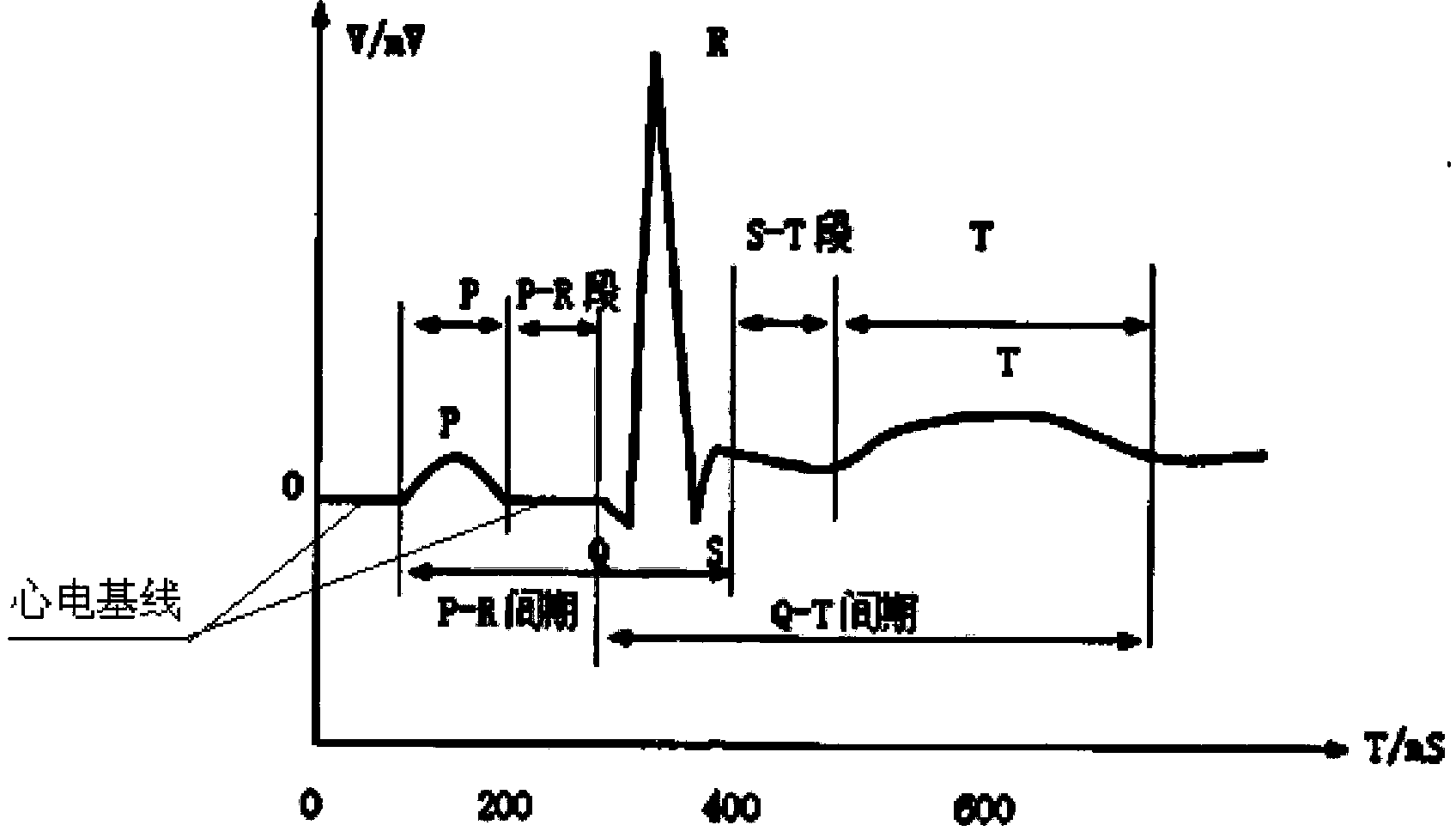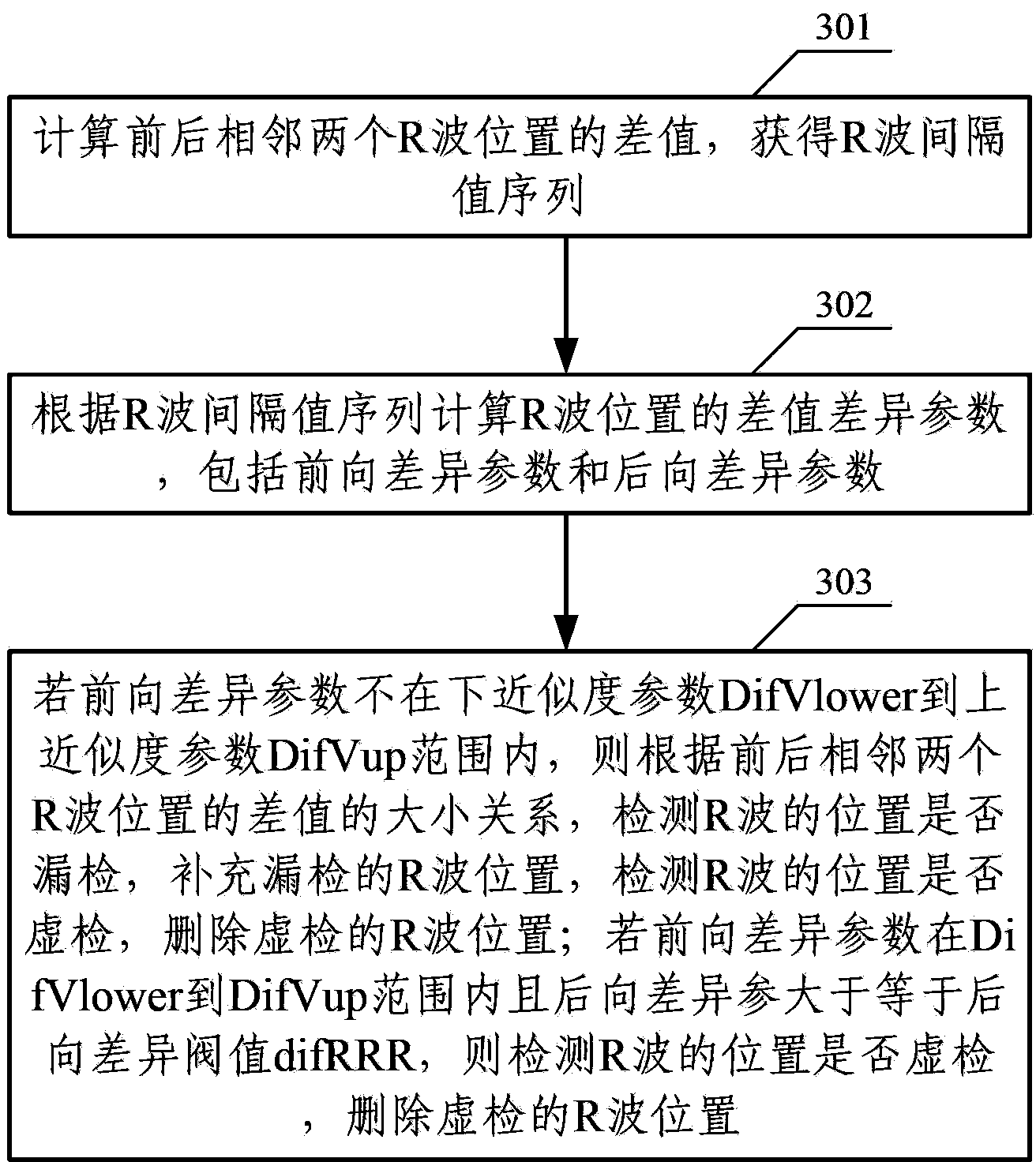Method and device for calibrating R wave of electrocardiosignal
A technology of ECG signal and calibration method, which is applied in the field of biomedical information engineering, can solve problems such as non-R calibration, R wave error, and less R wave calibration, so as to eliminate missed detection and false detection, with obvious effect and wide application prospect Effect
- Summary
- Abstract
- Description
- Claims
- Application Information
AI Technical Summary
Problems solved by technology
Method used
Image
Examples
Embodiment Construction
[0056] In order to make the purpose, technical solutions and advantages of the present invention clearer, the present invention will be further described in detail below in conjunction with the accompanying drawings. Obviously, the described embodiments are only some of the embodiments of the present invention, rather than all of them. Based on the embodiments of the present invention, all other embodiments obtained by persons of ordinary skill in the art without making creative efforts belong to the protection scope of the present invention.
[0057] The present invention assumes that the QRS wave recognition has been successful, and the R wave position has been determined in the original ECG data, expressed as iR (iR is the position sequence of the R wave, and its length is Lr), but there may be deviations in this position, such as missed detection (QRS is not detected in the place where there is QRS wave), false detection (QRS wave is detected in the place where there is no ...
PUM
 Login to View More
Login to View More Abstract
Description
Claims
Application Information
 Login to View More
Login to View More - R&D
- Intellectual Property
- Life Sciences
- Materials
- Tech Scout
- Unparalleled Data Quality
- Higher Quality Content
- 60% Fewer Hallucinations
Browse by: Latest US Patents, China's latest patents, Technical Efficacy Thesaurus, Application Domain, Technology Topic, Popular Technical Reports.
© 2025 PatSnap. All rights reserved.Legal|Privacy policy|Modern Slavery Act Transparency Statement|Sitemap|About US| Contact US: help@patsnap.com



